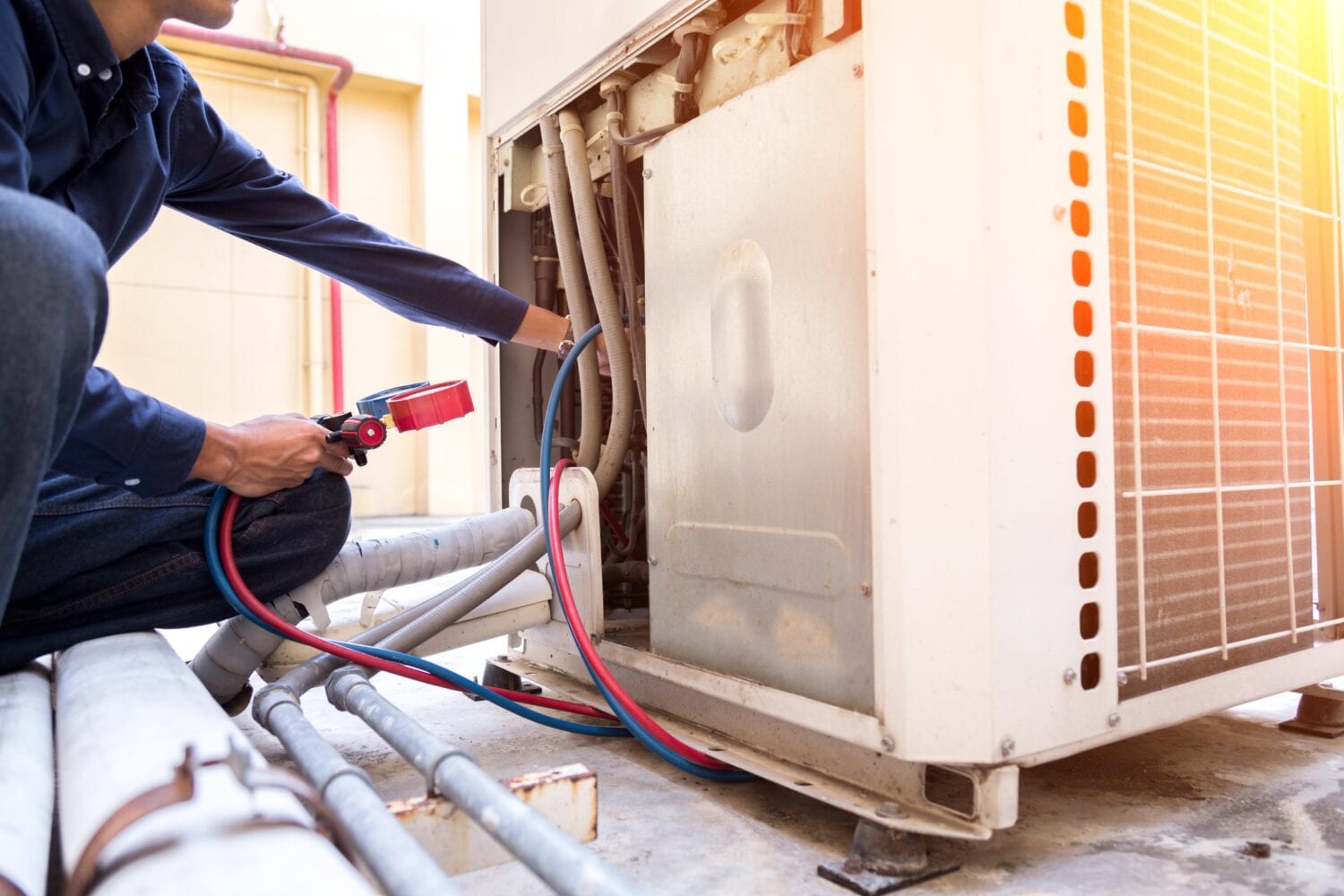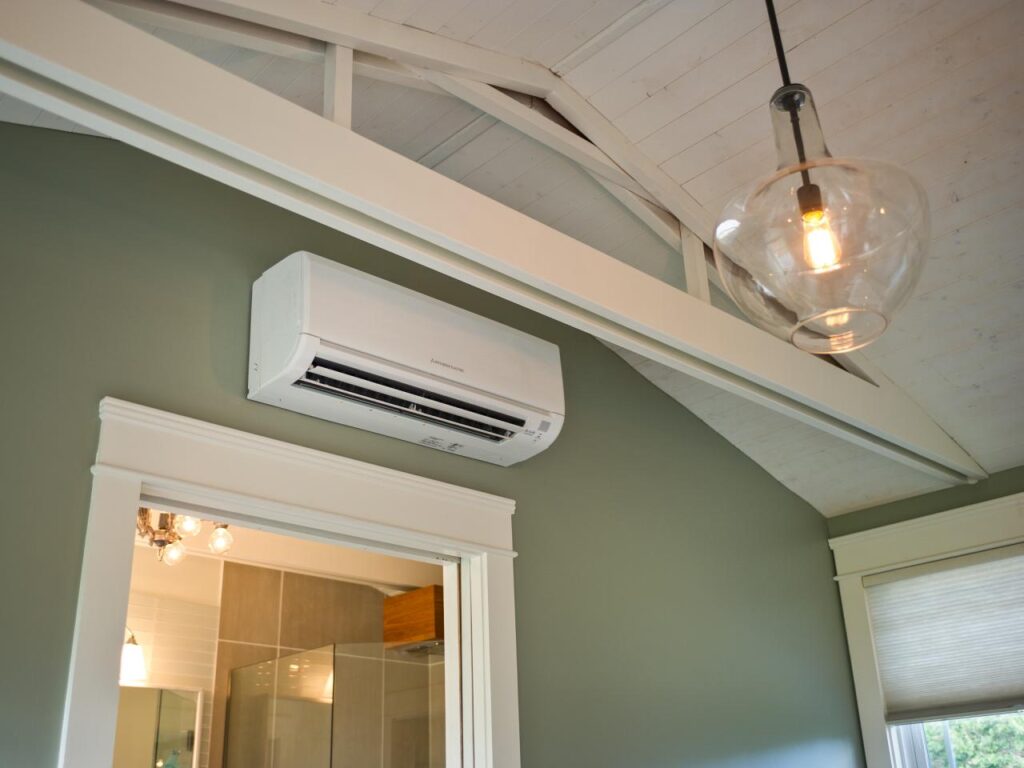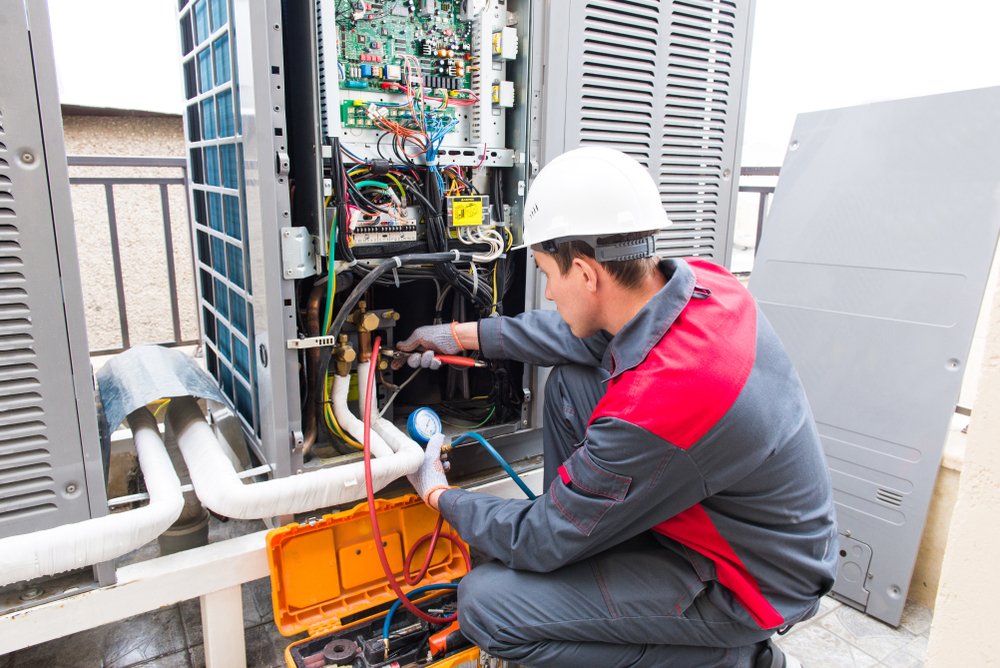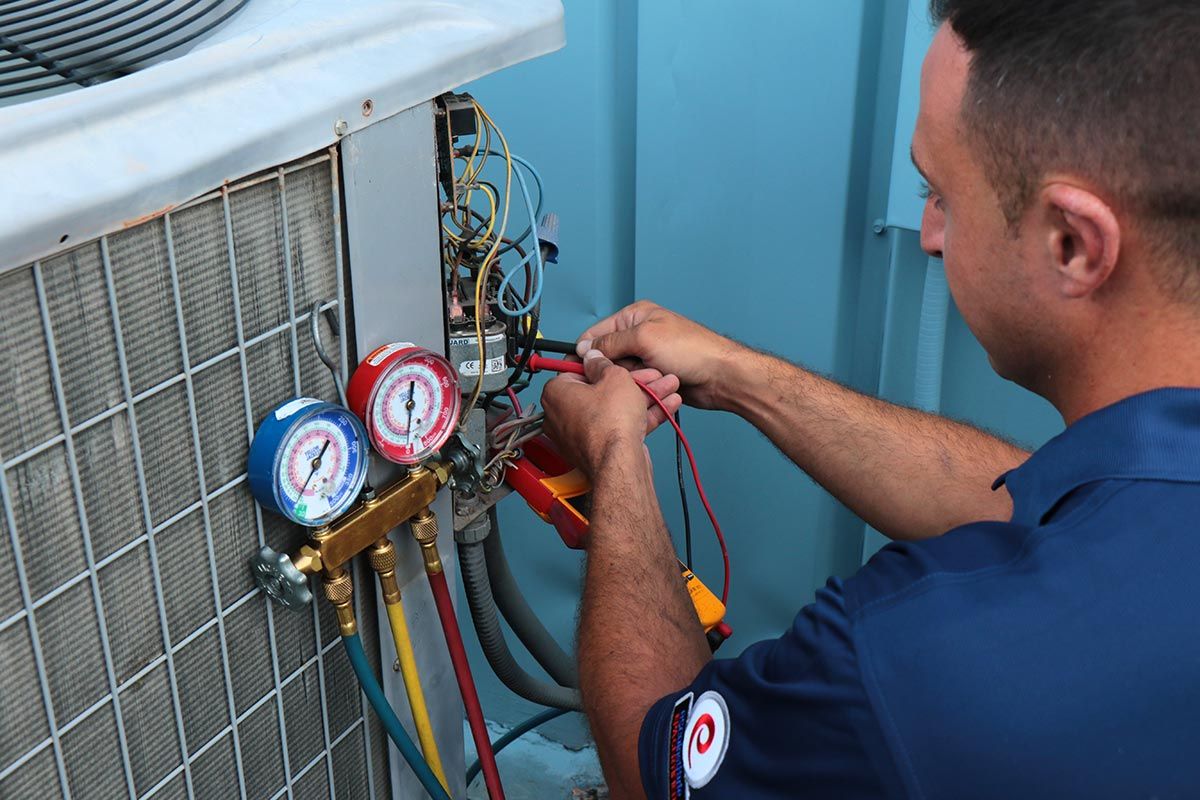When it concerns developing architectural areas, the old claiming 'type adheres to function' applies. However have you ever took into consideration how incorporating a/c right into style can elevate comfort and effectiveness all at once?
The smooth blend of cooling down systems within the structure of a structure not only influences the owners' well-being but additionally influences the overall sustainability of the framework. As you discover the intricate relationship in between design and air conditioning, a globe of innovative solutions and advanced innovations awaits your discovery.
Secret Takeaways
- Energy-efficient systems enhance comfort and sustainability.
- Integrated air conditioning enhances interior air top quality.
- Balancing aesthetics and performance ensures excellent style.
- Future trends concentrate on smart, sustainable cooling options.
Significance of Integrated Air Conditioning
When designing rooms, integrating air conditioning is crucial for guaranteeing the best convenience and performance. Energy effectiveness plays an important duty in the design process, as it not only reduces operational costs yet also minimizes the environmental impact of the structure. By incorporating energy-efficient a/c systems, you can develop a sustainable and cost-effective remedy that benefits both the owners and the planet.
Additionally, interior air quality is one more key aspect to take into account when developing with incorporated cooling. Appropriate air flow and filtering systems aid maintain a healthy indoor environment by reducing contaminants and allergens. This brings about boosted passenger health and efficiency. When picking air conditioning systems, focus on those that offer innovative filtration innovations to improve the general interior air top quality.
Aspects Influencing Layout Decisions
Integrating a/c into building designs calls for mindful consideration of different factors that influence style choices. When including air conditioning systems, sustainability considerations are crucial to minimize the structure's ecological influence. User experience plays a substantial duty in identifying the effectiveness and complete satisfaction with the air conditioning system.
- Energy Performance: Lasting design techniques aim to reduce power intake, which not just benefits the environment however likewise reduces operational costs for the building proprietor.
- Indoor Air High Quality: Supplying a comfortable and healthy and balanced indoor environment boosts the total customer experience, promoting performance and wellness.
- Looks and Integration: Integrating air conditioning systems seamlessly right into the architectural layout guarantees that performance doesn't jeopardize the visual appeal of the room, improving user fulfillment and total building looks.

Effective Cooling Techniques for Buildings
To enhance cooling efficiency in buildings, consider incorporating passive layout techniques along with cooling systems. Easy cooling techniques can substantially minimize the requirement for mechanical air conditioning, leading to even more lasting services for keeping comfy indoor temperatures. Layout features such as shielding gadgets, natural air flow systems, and thermal mass can aid control temperatures without counting only on energy-intensive cooling. By tactically positioning home windows to make the most of cross air flow or utilizing reflective roof covering products to decrease solar warm gain, you can harness the power of nature to cool your building efficiently.
In addition to easy techniques, applying sustainable solutions like green roofing systems or living wall surfaces can further enhance cooling down performance by giving insulation and reducing warm absorption. These attributes not just aid in preserving comfy indoor temperatures yet likewise contribute to a greener environment. By incorporating passive air conditioning strategies with lasting solutions, you can develop a more energy-efficient and environmentally friendly structure style that prioritizes both convenience and conservation.
Balancing Looks and Capability
Take into consideration the harmonious assimilation of aesthetic elements with useful facets in your architectural design to ensure a balanced and impactful outcome. When integrating cooling systems right into your structure style, striking a balance in between appearances and functionality is essential to developing rooms that not only look excellent yet also give suitable convenience for residents.
To accomplish this balance, maintain the complying with factors in mind:
- Mix the System with the Surroundings: Make sure that the cooling systems or vents flawlessly incorporate with the general aesthetic of the room, whether with concealed positioning, decorative covers, or matching shades.
- Prioritize User Experience: Design the air movement and temperature level control systems in such a way that prioritizes the convenience and well-being of the passengers. Consider elements such as air circulation, sound levels, and convenience of usage to enhance the overall individual experience.
- Include Lasting Practices: Opt for energy-efficient cooling services that not only add to the visual allure of the structure but additionally advertise sustainability and minimize ecological influence.
Future Trends in Architectural Air Conditioning
As you imagine the future of architectural layout, staying abreast of emerging air conditioning trends becomes pivotal for boosting both type and feature within your jobs.
The assimilation of smart innovations right into architectural cooling systems is readied to transform the way buildings are cooled down. These systems utilize information and automation to optimize power usage, offering individualized convenience while lowering ecological impact.
Lasting solutions are additionally forming the future of architectural air conditioning. From easy style techniques that make best use of all-natural air flow to ingenious cooling products that minimize the need for traditional cooling, sustainability goes to the center of cooling down advancements. Designers are increasingly including green roofings, shading elements, and thermal mass into their styles to produce more energy-efficient cooling systems.
Regularly Asked Inquiries
Just How Does A/c Influence the Overall Sustainability and Energy Performance of a Structure Design?

When you incorporate a/c right into structure design, it influences sustainability and energy efficiency. Power intake can increase as a result of air conditioning use, affecting building effectiveness. This raised energy need can have negative ecological influences, minimizing general sustainability.
To mitigate these impacts, consider integrating energy-efficient cooling and heating systems, proper insulation, and passive air conditioning methods. Stabilizing comfort with energy efficiency is very important for creating sustainable building designs.

Exist Any Kind Of Laws or Certifications That Architects Need to Consider When Integrating Air Conditioning Into Their Layouts?
When integrating air conditioning right into your designs, it's critical to take into consideration regulatory demands like building regulations and certification standards for energy performance. Meeting these standards assurances that your project straightens with market best techniques and environmental goals.
Acquainting yourself with these laws will aid you in developing lasting designs that focus on comfort while additionally minimizing power intake. Stay educated and certified to deliver tasks that are both comfortable and eco-friendly.
Can the Placement of Cooling Units Influence the Total Convenience and Performance of a Space?
When it comes to a/c devices, positioning matters a great deal for your area's comfort and functionality. Air flow is crucial, so stay clear of obstructing vents or positioning devices in tight corners.
Consider how environmental pollution can influence your environment and go for a visually pleasing setup that blends seamlessly with your spatial design.
Take notice of where you place these systems to assure maximum comfort and performance throughout your space.
What Are Some Cutting-edge Technologies or Products That Can Be Made Use Of to Enhance Cooling Solutions in Modern Design?
To boost a/c systems in modern-day style, you can check out wise controls and sustainable materials. Passive air conditioning methods and utilizing thermal mass are cutting-edge methods to enhance effectiveness and comfort.
Just How Can Architects Ensure That the Style of Air Conditioning Solutions Matches the Overall Aesthetic of a Structure While Still Focusing On Performance and Convenience?
To assure the layout of air conditioning systems complements a building's visual, focus on visual integration and layout harmony. Include energy-efficient technologies for capability. ac not blowing cold air Stabilizing visual appeals and performance improves owner comfort.
Stress smooth integration of air conditioning elements right into the architectural layout. By focusing on both aesthetic appeals and energy efficiency, designers can develop an area that's visually enticing, comfy, and eco-friendly.

Conclusion
On the whole, when creating with convenience in mind, incorporating air conditioning in architecture is crucial. By taking into consideration variables such as efficient air conditioning approaches, balancing visual appeals and capability, and staying ahead of future fads, engineers can create areas that aren't only visually enticing yet likewise comfortable for residents.
It is essential to focus on the health and convenience of those who'll be using the room, and integrated cooling plays a crucial function in accomplishing this goal.
